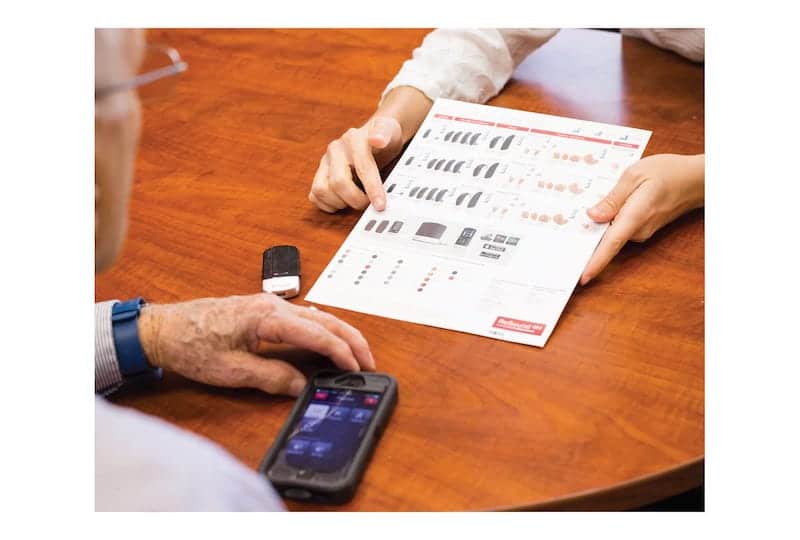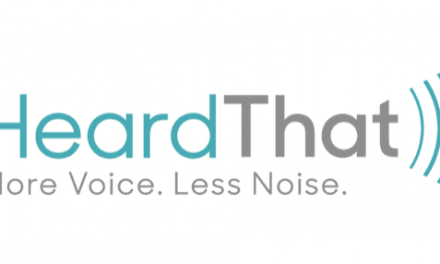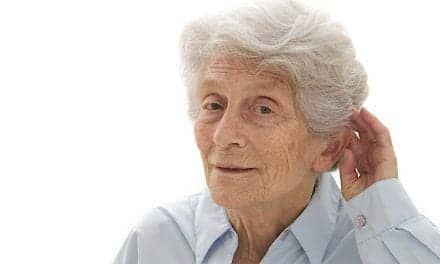Audiologists play a significant part in guiding patients through the expanding array of hearing care technologies, ensuring solutions fit personalized needs for improved auditory experiences.
By Andy Lundin
As the market for over-the-counter (OTC) hearing aids continues to expand since the FDA approved the sale of the devices to the public, the range of hearing care products beyond prescription hearing aids continues to grow in volume and become more varied.
Because of this, it’s now more important than ever for patients in need of hearing care solutions to understand the nuances of the myriad hearing technologies and assistive listening devices (ALDs) available to them. Ultimately, the knowledge and support of an audiologist are essential to a patient’s hearing health journey. Here are some tips for how to help clients along the way.
Further reading: OTC Hearing Aids: Access, Affordability, and Advancements
Familiarity With Hearing Care Devices is Critical
With OTC hearing aids, for example, Jagadish M. Swamy, AuD, owner of the private clinic Clear Sound Audiology in Gainesville, Fla., observed what he considers unnecessary confusion among new consumers who are in the market for the technology. They don’t understand how to successfully use OTC hearing aids to achieve satisfactory results, and can get turned off to the idea of hearing aids altogether.
“A lot of people who have avoided the technology in the past may find the new devices challenging to use,” Swamy says. He notes that the buyer’s lack of prior knowledge and deep investigation of the products may result in dissatisfaction when they try to set up and use the devices on their own. “They might just wear them, not have a good experience, and say to themselves, ‘I knew hearing aids were not meant for me,’ even if they actually would be beneficial if they were more educated about the device,” Swamy says.
Although many people might give up after a bad experience trying to set up and use OTC hearing aids on their own, some will then come to an audiology office looking for help. For such patients, Swamy takes the opportunity to talk to them about what about the devices didn’t work for them and to discuss finding a solution that does. They might not be aware of all the options available to them.
Given that OTC hearing aids represent only a fraction of the diverse array of hearing care devices available to the public, audiology patients will benefit significantly from a better understanding of assistive listening devices. For those who are willing to listen, Swamy suggests explaining to patients how they can use and benefit from technologies such as hearing loop systems, infrared systems, FM systems, and personal amplifiers, among others.

Sharing a chart like this that shows the differences between the available options can help clients understand what might work for them and why. Chart courtesy of the U.S. FDA
Consider, for example, a client’s understanding of the distinctions between a personal sound amplification product (PSAP) compared with an OTC hearing aid. Both serve the purpose of amplifying sound for the user, but PSAPs are not classified as medical products(1), nor should they be used as a substitute for other devices geared toward those with mild-to-moderate hearing loss. To clarify the difference, Swamy explains to his patients that OTCs have better background noise reduction programming, whereas PSAPs primarily amplify noises in specific environments. Sharing a chart that shows the differences between the available options can help clients understand what might work for them and why.
“Hearing aids and personal sound amplification devices (PSAPs) are not the same thing,” emphasizes Katie Koebel, MClSc, audiologist and senior manager of audiology at HearingLife Canada. She feels it’s important to explain to clients that “If a patient is already diagnosed with hearing loss and fitted with a hearing aid, a PSAP will not provide any additional benefit to them. PSAPs are for people who want to either amplify or suppress noises in certain environments only, whether they have normal hearing or hearing loss.”
While ALDs and other hearing care devices enhance auditory experiences, it’s crucial to recognize that they should be addressing the unique needs of an individual and that there is no one panacea solution. Therefore, understanding the similarities and unique qualities among these devices is essential, particularly as advancements in technology introduce newer solutions—like OTC hearing aids—to the market.
However, Koebel notes that misinformation can be an issue, so she suggests warning clients to be cautious when seeking out new hearing care technologies due to potentially misleading products on the market.
“It does not help that many hearing aid scams have been plaguing the U.S. market with false claims and misleading advertising that further clouds the judgment of those looking for hearing loss treatment,” she says. This is another reason why a conversation between audiologists and their clients about the search for the right device is even more important.
Know the Client’s Needs
Indeed, the expertise of an experienced audiologist to identify the technologies that would best suit an individual’s unique hearing care need is critical.
“While the technology of ALDs will improve, without the personalization to meet the unique hearing needs of each individual provided by an experienced clinician, they still will fall short of the hearing experience offered by prescription hearing aids,” says Koebel.
Swamy cites a recent experience at his clinic that underscores the importance of tailored solutions that take into account all of a client’s needs. He encountered a patient having trouble with word comprehension due to an inherent ear condition. In response, he recommended she adopt the use of a multi-microphone ALD to address her specific challenges. While he could have recommended she buy new hearing aids, he recognized this might not be the best option for her.
“I was telling her that she needs to seriously consider getting a multi-microphone,” he says, noting that this technology served as an appropriate, and much more affordable, alternative to improved hearing care given her circumstance. “I told her if she didn’t want to get a new hearing aid, then another way you can see immediate improvement is by getting the multi-microphone ALD for her hearing aid.”
Further reading: Helping Children and Teens Benefit from Assistive Listening Technology
Technology Beyond ALDs
However, ALDs may not fit every hearing care challenge that a client is experiencing, and thus learning more about the needs of the patient can help audiologists propose additional solutions, such as captioning technologies.
When it comes to experiencing conversations via telephone, the limitations of small speakers and not being able to see someone’s visual cues can make understanding speech much more difficult. Captioning technologies, available from a variety of manufacturers, provide a different avenue of support for clients with hearing loss.
These technologies can help anyone experiencing hearing difficulties but are often aligned with addressing hearing challenges experienced by seniors. Therefore, many audiologists already include these options when consulting patients in older age demographics. Because many seniors experience increased isolation due to the loss of family and friends, living alone, and travel limitations, finding ways to help them maintain their social connections is essential, say experts. And using technology to caption phone conversations can help in this regard.
However, there is no need for people who are younger to miss out on the benefits of captioning technologies—whether due to stigma or unawareness of their availability—especially considering the abundance of smartphone apps that provide essentially the same functionality. Bridging that gap often comes down to hearing care professionals making clients aware of what the technologies can do for them, and guiding them through the steps of signing up and getting access. Many may not be aware that telephone captioning is free to them.
These technologies are evolving. However, many traditional technologies remain essential to the market, particularly among older generations, which has helped ensure their continued relevance.
For example, telecoil technologies have existed since the 1940s, and are still a commonly used technology for individuals with hearing loss using telecoil-enabled hearing aids, particularly in public settings with compatible loop systems or telecoil-enabled devices. Yet the types of technology audiology patients are familiar with will continue to evolve, and manufacturers have expressed that they are prepared to adapt as the needs, wants, and comfort levels of people with hearing loss change over time.
The Evolving Hearing Care Landscape
This recognition of the need to adapt to technology can be applied to the broader hearing care device landscape, as well.
While the older technologies still serve a fundamental and practical purpose, such as the aforementioned hearing loop technologies, new solutions like Auracast, which utilizes Bluetooth low energy (LE), are heavily influencing the space and are now becoming part of the audiologist’s toolbelt of hearing care technologies that can be used to support their clients’ hearing care journeys. Keeping new and returning clients abreast of these advancements and how they can make use of them will help improve their hearing experience and could increase patient retention.
“With Auracast technology, sound quality is improved for those with and without hearing loss at a lesser cost. Whether you are connecting to the signal using headphones, earbuds, or hearing aids, everyone is able to benefit from a better quality sound experience,” says Koebel. Future innovations she predicts for the hearing care product and ALD space include a focus on enhanced noise cancellation, improved speech recognition, and integration with smart devices for seamless connectivity.
But whatever the hearing care device market looks like in the future, audiologists’ guidance and expertise will play a pivotal role in helping clients navigate the diverse array of ALDs and other hearing products. And the essence of personalized care remains paramount through all of it.
Original citation for this article: Lundin A. Helping Patients Parse Hearing Technology Beyond Hearing Aids. Hearing Review. 2024;31(3): 08-13.
Featured image: Jennifer Larmann, AuD, from Clear Sound Audiology explains hearing technology to a patient. Photo courtesy of Clear Sound Audiology.
References:
- U.S. FDA. Hearing Aids and Personal Sound Amplification Products: What to Know https://www.fda.gov/consumers/consumer-updates/hearing-aids-and-personal-sound-amplification-products-what-know.





